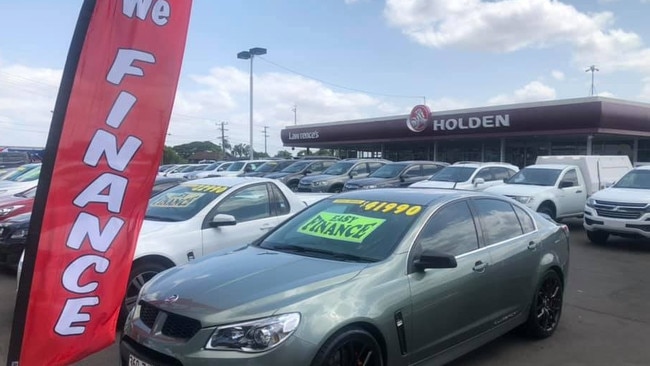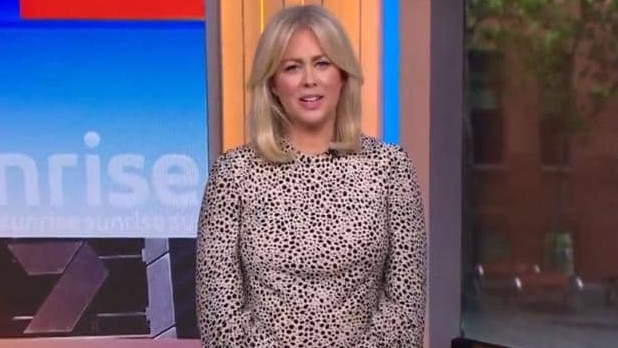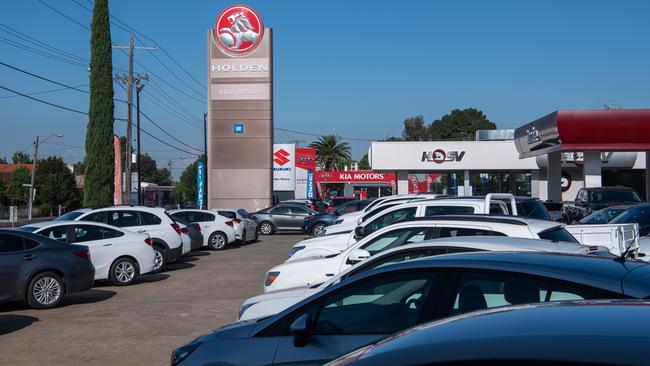Sales figures reveal Holden’s sad years-long decline despite legendary status
It might be the most iconic car brand in the country – but sad figures reveal Holden’s legendary status is little more than a fairytale.

Manufacturing
Don't miss out on the headlines from Manufacturing. Followed categories will be added to My News.
For generations the humble Holden was held up as the quintessential Australian car.
The iconic Commodore dominated our roads and our best-selling lists – but yesterday, parent company General Motors (GM) dropped the bombshell revelation it was pulling the pin on the Aussie market, bringing Holden’s 160-year history to an end by 2021.
The news that the Holden brand would soon be “retired” forever sparked an outpouring of anguish from car lovers who described it as a “sad day” and “the end of an era”.
RELATED: Follow updates on Holden and other motoring news
But while the brand has enjoyed legendary status in this country for decades on end, it turns out that in recent years at least, the Holden myth was just that.
RISE AND FALL
According to carsales.com.au, Australia’s largest online automotive, motorcycle and marine classifieds business, in 2009 Holden was the country’s second best-selling car brand with 119,568 sales.
And that year, the Holden Commodore was also the country’s best-selling model – a title it first gained in 1996 – clocking an impressive 44,387 sales.
But just a decade later, it was a very different story.
Australian automotive website PerformanceDrive reported that last year Holden dropped from the sixth best-selling car brand in 2018 down to 10th place with just 43,176 sales, with no individual models in the top 10.
It means that in 2019, the entire Holden brand failed to meet the sales the Holden Commodore alone had enjoyed just 10 years prior – a dramatic change in fortune for such a beloved brand.
‘BIGGEST BLOW’
According to UTS Professor Roy Green, an expert on innovation and manufacturing, three separate factors sealed Holden’s fate.
“The biggest blow to GM and the Holden brand as well as to other car assembly manufacturers was the tariff reform in the 1980s and ’90s, which exposed what were tariff-protected industries to international competition and a range of diverse brands which were able to invest heavily in new models, whereas GM and Ford certainly had the view that their investment in Australia could only be supported with government subsidies,” he said.
“It combines with the fact that models were increasingly superseded by other designs, including SUVs and I guess ultimately down the track electric vehicles, although that hasn’t happened yet, but it meant Australian car manufacturing had a limited future.

“The second blow was the rising dollar during the mining boom that squeezed out much of our car manufacturing, and the third was the failure to develop a global presence and therefore economies of scale to sustain car assembly and manufacturing in Australia.”
Prof Green said the tariff reforms led to increased consumer choice – and ultimately, the Australian public voted with their wallets.
“It was huge – with all that competition came increased choice, and consumers had the opportunity to buy alternative models, particularly SUVs,” he said.
“With the interest in SUVs and the failure of this large international company to adapt their model range, the decline in local sales was inevitable.
“People made their choice – they may have had a sentimental attachment to the brand, but they weren’t buying the cars.”
HOST LASHES OUT
It was a sentiment echoed by Sunrise host Samantha Armytage this morning when she argued that while Australians were devastated by Holden’s exit, ultimately we only had ourselves to blame.
“For everybody out there saying ‘We love Holdens’, why didn’t they buy Holdens? Then we wouldn’t be in this problem,” Armytage said on air.

“It is an American company that has been given more chances than Phar Lap.
“And for all the people grimacing about Holden, they are not driving them now.”
“It is sad … but they’ve got no one to blame but themselves,” co-host David Koch said.
WRITING ON THE WALL
While that significant decline in sales was clearly one major factor in Holden’s downfall, a “perfect storm” of conditions ultimately contributed to the exit.
Late last year the company announced it would stop selling its most iconic car, the Commodore, and by that point local manufacturing was also long gone after ceasing back in 2017.
GM itself has been investing heavily in electric vehicles and has been producing fewer models in recent years.

The company also made a strategic decision to turn away from the right-hand-drive market, which represents a clear minority of countries globally.
And Holden was further impacted by changing consumer tastes, with a recent emphasis on SUVs and European and Asian vehicles and a move away from full-size sedans.
Originally published as Sales figures reveal Holden’s sad years-long decline despite legendary status

